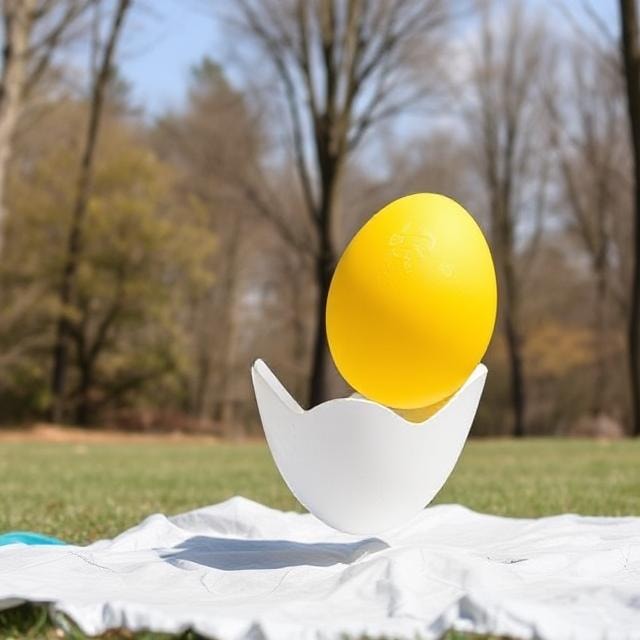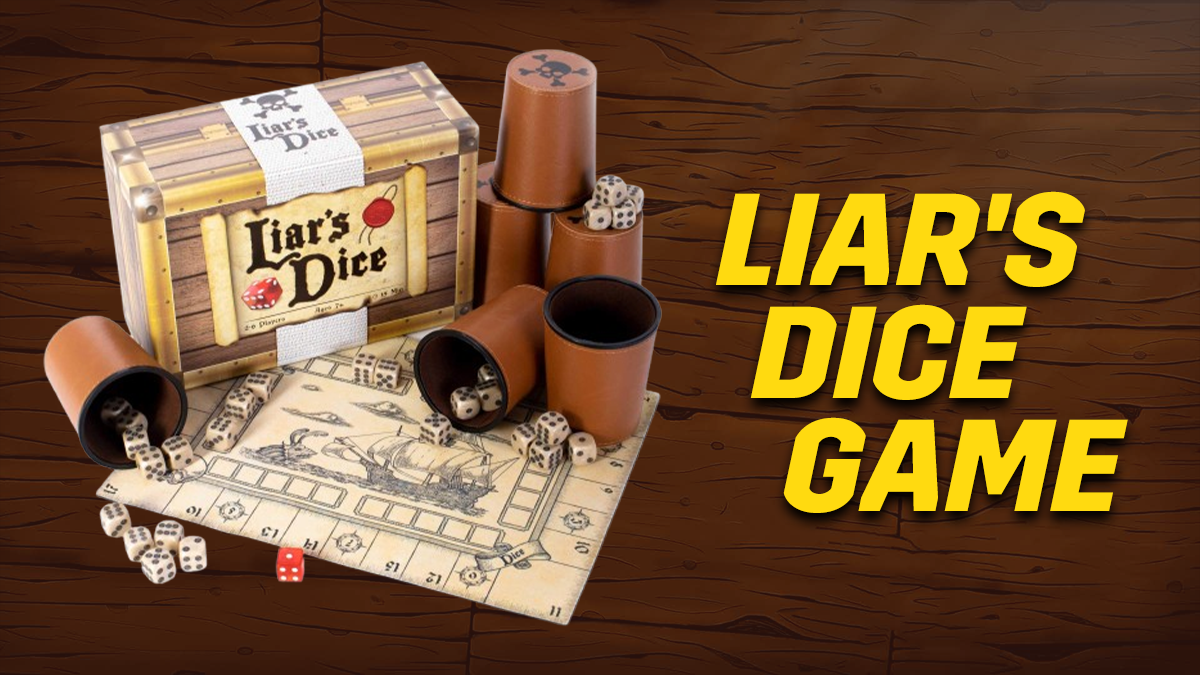Table of Contents
ToggleWhat is the Egg Drop Game?
The Egg Drop Game is a team-building challenge where you and your teammates design a protective “nest” for an egg using simple materials. Then, you drop your creation from about 8 to 10 feet high to test if your egg stays safe or cracks.
If your egg doesn’t break, you win! If multiple teams succeed, the team that used the fewest materials wins. The Egg drop game is usually a classroom activity. But you can use it as a friendly challenge in competitive games.
How to Play the Egg Drop Game?

Egg Drop challenge is for all ages. However, depending on the age, material requirements vary. Younger kids would need safer materials to handle.
Objective
Players/students design a structure that protects a raw egg from breaking when dropped from a height. The goal is to prevent broken eggs by slowing the fall. The team/person that uses the fewest materials and prevents the egg from breaking wins.
Requirements
To play the Egg Drop Challenge, each team gets:
- One raw egg (plus extras in case of accidents)
- 40 thin straws
- Cardboard
- Duct tape (about 1 meter per team)
- Various materials like cotton, foam, bubble wrap, etc.
You’ll need at least six players, but more people can join.
Note: Requirements vary (increase) based on the complexity and idea used in the game.
Playing the Game
Step 1: Form Teams
Divide everyone into teams of 3 to 5 players. Each team gets the same materials to create a protective structure for their egg.
Step 2: Build Your Egg Nest
You have 15 minutes to design and build a structure that will keep your egg from breaking when dropped. You can use straws, tape, and cardboard to make a protective shield.
Think about how to cushion the egg so it doesn’t crack when it hits the ground. Your team can come up with any design, but you have to work fast!
Step 3: Drop the Eggs!
After the time is up, gather all the teams and drop each egg structure from the same height: about 8 to 10 feet. Make sure every egg is dropped at the same speed.
Step 4: Check for Winners
Carefully open each structure and check if the egg has survived. If it hasn’t cracked, the team wins!
If more than one egg survives, the team using the least straws wins the challenge.
Read Our How to Play White Elephant – Gift Exchange Rules Guide!
Think About Your Design
After playing, take time to discuss:
- What worked well?
- What would you do differently next time?
- Did your design change as you built it?
- How did your team work together?
Learnings from the Activity
The egg drop challenge is an educational activity. It is used in STEM curricula to demonstrate various principles to students. It conveys the principles of Forces, Impulse, and Energy Conservation.
- When you drop the egg, gravity pulls it down, and it keeps falling until something stops it- this is called inertia (Newton’s First Law).
- The faster it falls, the harder it hits the ground, following Newton’s Second Law (Force = Mass x Acceleration).
- It’s used to discuss potential energy and kinetic energy in practice.
- If the impact is too strong, the egg breaks. When the egg hits the ground, the ground pushes back with the same force (Newton’s Third Law), which can cause cracks.
- But if you build a good protective structure, it spreads out the force and keeps the egg safe. Soft materials like straws and cardboard used here slow down the fall using air resistance, which reduces the impact. The egg drop team-building activity also shows how momentum, energy, and impulse affect the egg.
- Moreover, the activity teaches resourcefulness to your students. You can create a material list and assign prices to each. Set a budget and have students draw their designs. Reward the best performance.
What makes the Egg Drop game a team building activity?
In the egg drop team building activity, you and your teammates work together to build something that will protect an egg when dropped from up high. Everyone has different ideas, so you have to talk, listen, and decide on the best plan as a team.
If your egg breaks, you don’t just give up. You learn from what happened, improve your design, and try again. This is just like real teamwork!
Instead of just dropping the egg once and stopping, you can talk about what worked, what didn’t, and how to make it better. Maybe you should try using fewer materials or dropping them from an even higher place!
Through multiple iterations, you learn important skills like problem-solving, communication, and creativity. It helps not just in games but in school, sports, and everyday life. Moreover, the Egg Drop Experiment is about how well you work together and learn from mistakes. No wonder it is such a great team-building activity.
Egg Drop Challenge Ideas
For Younger Kids
Egg drop designs for younger kids should consider lightweight and safe materials like foam, cotton, bubble wrap, etc.
1. Cotton Ball Nest
The egg is surrounded by cotton balls to absorb impact when it hits the ground.
Materials: Cotton balls, tape, small box
How to Build: Fill a box or cup with cotton balls and place the egg in the middle. The cotton balls cushion the egg when it lands.
2. Bubble Wrap Shield
Bubble wrap softens the impact by spreading out the force.
Materials: Bubble wrap, packing peanuts, tape
How to Build: Wrap the egg in several layers of bubble wrap and secure it with tape. When dropped, the bubbles absorb the shock.
3. Foam Container
Foam reduces impact force when the egg lands.
Materials: Foam cups, small foam box
How to Build: Place the egg inside a foam cup or small box and fill any empty space with soft materials like sponge or tissue paper.
4. Balloon Cushioning
Balloons act as airbags to protect the egg from breaking.
Materials: Small balloons, tape
How to Build: Inflate small balloons and arrange them around the egg. Tape them together so they stay in place.
5. Parachute Drop
A parachute slows the fall of the egg, reducing impact when it lands.
Materials: Plastic bag, fabric, string
How to Build: Cut a large square of plastic or fabric and attach four strings to the corners. Tie the strings to a small cup or bag holding the egg.
For Older Kids
These egg-drop designs involve more complexity and problem-solving skills.
6. Cup and String Suspension
The egg hangs inside a cup, keeping it from hitting the ground directly.
Materials: Paper cup, string, rubber bands
How to Build: Cut four holes near the rim of a cup and attach strings across the opening. The egg is placed inside so it hangs in the air.
7. Straw Cradle
A structure made of straws protects the egg from breaking.
Materials: Plastic or paper straws, tape
How to Build: Tape straws together to form a cube or pyramid around the egg. The straws take the impact instead of the egg.
8. Cardboard Tube Support
Cardboard tubes help spread out impact force and protect the egg.
Materials: Toilet paper rolls, tape
How to Build: Tape several tubes together around the egg. The tubes act as shock absorbers.
9. Egg in a Cereal Box
A cereal box filled with soft materials protects the egg.
Materials: Cereal box, padding materials (like tissue, paper, or bubble wrap)
How to Build: Place the egg inside the cereal box and fill it with soft padding. This absorbs the impact when the box hits the ground.
10. Egg in a Flour Bag
A bag of flour cushions the egg by slowing down the impact.
Materials: Plastic bag, flour
How to Build: Place the egg inside a sealed bag filled with flour. The flour absorbs the force when dropped.
Advanced Egg Drop Ideas
These ideas use engineering principles to protect the egg.
11. Paper Mache Shell
A hardened shell protects the egg like a helmet.
Materials: Newspaper, flour, water
How to Build: Dip newspaper strips in a flour-water paste and wrap them around a balloon. Let it dry overnight, then cut it open and place the egg inside.
12. Spring Suspension System
Springs absorb impact and reduce the force on the egg.
Materials: Small springs, foam, box
How to Build: Attach small springs inside a box and place the egg in the middle. The springs soften the landing by absorbing energy.
13. Water-Filled Container
Dropping the egg into a container of water slows the fall and reduces impact.
Materials: Plastic container, water
How to Build: Fill a container with water and drop the egg inside. The water catches the egg gently instead of letting it hit the ground.
14. Helicopter Egg Drop
A spinning rotor slows the egg’s fall.
Materials: Paper, craft sticks, tape
How to Build: Create a small helicopter rotor from paper and attach it to the egg case. The spinning slows down the fall.
15. Egg in a Gel Pack
A gel pack absorbs impact and keeps the egg safe.
Materials: Gel pack, small container
How to Build: Place the egg inside a gel-filled pack and seal it inside a small container. The gel absorbs the shock when the egg lands.
Fun Facts
Eggshells Are Surprisingly Strong
Even though eggs seem fragile, their oval shape makes them strong against pressure from all sides. That’s why a bird can sit on its eggs without cracking them.
Try It With Watermelon
The same science works with bigger objects. Some people conduct the egg drop project with watermelons or other fruits to see how impact and protection work on a larger scale.
Just Like Helmets and Airbags
Engineers use the same science to design helmets, car airbags, and other safety gear to protect people from crashes.
Just Like a Spaceship Landing
When NASA lands a spaceship on a planet, they use special materials and parachutes to keep it safe. In the Egg Drop Experiment, you do the same thing.
An Egg Can Resist Even Pressure
Try squeezing an egg evenly in your palm- it won’t break! That’s because the pressure is spread out.
Extreme Egg Drops
Some people have dropped eggs from skyscrapers, drones, and even airplanes. Some eggs survived, but only with very clever designs.
Think You Know Wiffle Ball? Learn How to Play It the Right Way – Official Rules & Gameplay
Conclusion
The Egg Drop project isn’t only a fun experiment. It mirrors real-world engineering problems. Similar concepts help design earthquake-resistant buildings, shockproof packaging, and even athletic gear. Engineers constantly test materials and structures to absorb force efficiently.
If you’re looking for an extra challenge, try limiting materials even further or simulating real-world conditions like wind or uneven landings. Observing how designs fail is as valuable as success as it encourages students to develop critical thinking and adaptability.
FAQs
What does the egg drop game show?
The egg drop challenge demonstrates the principles of physics, including gravity, force, momentum, and impact absorption. It shows how protective structures reduce impact force that prevents the egg from breaking. Moreover, it applies to real-world engineering, e.g., designing crash-resistant vehicles and protective gear.
What shape is the strongest for an egg drop?
The arch structure at either end of the egg is stronger than its sides. It evenly distributes force to prevent cracks.
What are common mistakes in an egg drop experiment?
Using rigid materials, not considering air resistance, and failing to distribute force evenly are common mistakes. A good design should absorb shock. It should also slow the fall and protect weak points.
What materials work best for an egg drop game?
Soft, shock-absorbing materials like foam, cotton, bubble wrap, and sponges work best. Parachutes or crumple zones help slow the fall, reducing impact force and increasing the chances of keeping the egg intact.








